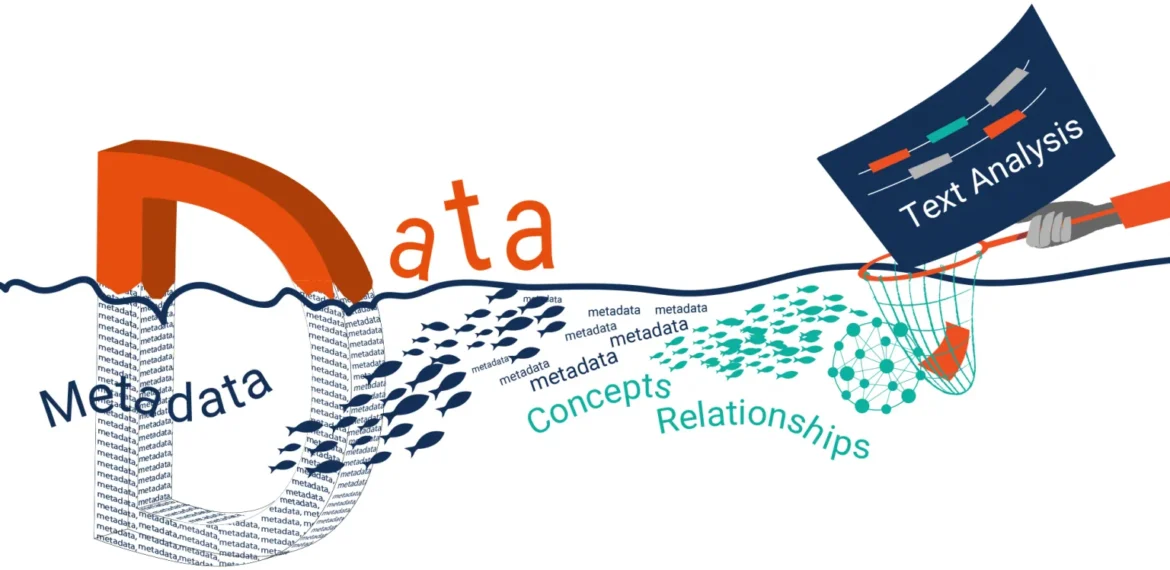
How Metadata is Streamlining Analytics
How Metadata is Streamlining Analytics
In the ever-evolving landscape of data management and analytics, the concept of a “data fabric” has emerged as a crucial framework for integrating and leveraging data across disparate sources and platforms. At its core, the data fabric represents a unified architecture that enables organizations to seamlessly connect data assets, applications, and analytics capabilities in a cohesive and efficient manner. Central to the effectiveness of this data fabric is metadata – the unsung hero that plays a pivotal role in streamlining analytics and unlocking the full potential of organizational data.
Understanding the Data Fabric
Before diving into the role of metadata, it’s essential to grasp what constitutes a data fabric. Unlike traditional data architectures that rely on rigid, siloed structures, a data fabric is designed to be agile, scalable, and responsive to the dynamic nature of modern data ecosystems. It serves as a unifying layer that spans across on-premises and cloud environments, integrating data from various sources such as databases, applications, IoT devices, and more.
The key components of a data fabric typically include:
- Data Integration and Orchestration: Facilitates the movement and transformation of data across different systems and environments.
- Data Governance and Security: Ensures that data is managed in compliance with regulatory requirements and organizational policies.
- Data Analytics and Insights: Empowers users to derive actionable insights from data through advanced analytics, AI/ML algorithms, and visualization tools.
The Role of Metadata in Data Fabric
At its essence, metadata can be thought of as data about data – descriptive information that provides context, meaning, and structure to raw data assets. Within the context of a data fabric, metadata serves several critical functions that are instrumental in enhancing the effectiveness and efficiency of analytics processes:
1. Data Discovery and Understanding
Metadata acts as a navigational guide within the data fabric, helping users locate and understand relevant data assets. By providing detailed information about data sources, formats, schemas, and relationships, metadata enables data engineers, analysts, and data scientists to quickly assess the suitability and relevance of data for their specific analytical needs. This capability is particularly valuable in large and complex data environments where data sprawl and fragmentation can hinder productivity and insight generation.
2. Data Integration and Harmonization
In heterogeneous data environments characterized by diverse data types, structures, and semantics, metadata plays a crucial role in facilitating data integration and harmonization efforts. By capturing and documenting metadata attributes such as data lineage, transformation rules, and semantic mappings, organizations can ensure consistency and compatibility across disparate data sources. This not only accelerates the data integration process but also enhances the accuracy and reliability of analytical outputs.
3. Data Quality and Governance
Maintaining data quality and ensuring adherence to governance standards are paramount concerns for organizations striving to derive meaningful insights from their data assets. Metadata provides the necessary metadata quality checks, data lineage information, and audit trails that are essential for monitoring data provenance, identifying anomalies, and mitigating risks related to data integrity and compliance. By leveraging metadata-driven data governance frameworks, organizations can establish robust controls and policies that safeguard data privacy, security, and regulatory compliance.
4. Enhanced Data Collaboration and Reusability
In collaborative analytics environments where multiple stakeholders across different teams and departments are involved in data analysis and decision-making processes, metadata serves as a catalyst for enhanced collaboration and knowledge sharing. By documenting data semantics, business glossaries, and usage metrics, metadata enables users to discover and reuse existing data assets, thereby eliminating redundancy, minimizing duplication of effort, and fostering a culture of data-driven innovation and agility.
5. Support for Advanced Analytics and AI/ML
As organizations increasingly embrace advanced analytics techniques and leverage AI/ML algorithms to extract actionable insights from large volumes of data, metadata assumes greater significance in enabling these transformative initiatives. By enriching metadata with contextual information such as data lineage, statistical profiles, and model metadata, organizations can accelerate model development, enhance algorithmic transparency, and improve the interpretability and trustworthiness of analytical outputs. This metadata-driven approach not only enhances the effectiveness of predictive and prescriptive analytics but also empowers organizations to make informed decisions with confidence and clarity.
Implementing Metadata-Driven Analytics
The successful implementation of metadata-driven analytics within a data fabric requires a strategic approach and a commitment to leveraging metadata as a foundational asset for data management and analytics. Key considerations include:
- Metadata Management Platforms: Investing in robust metadata management platforms and tools that facilitate the centralized capture, storage, and governance of metadata across the data fabric.
- Metadata Standards and Taxonomies: Establishing standardized metadata schemas, taxonomies, and ontologies that ensure consistency and interoperability across diverse data sources and analytical workflows.
- Automation and AI-Driven Metadata Insights: Harnessing automation and AI-driven capabilities to automate metadata extraction, enrichment, and validation processes, thereby minimizing manual effort and enhancing metadata accuracy and relevance.
- User Training and Adoption: Providing comprehensive training and support to users on the importance of metadata, its role in enhancing analytics capabilities, and best practices for leveraging metadata-driven insights effectively.
Conclusion
In conclusion, metadata serves as the linchpin that unlocks the full potential of a data fabric by enhancing data discovery, integration, quality, governance, collaboration, and advanced analytics capabilities. As organizations continue to navigate the complexities of digital transformation and data-driven decision-making, embracing a metadata-centric approach to data management and analytics will be essential for achieving agility, innovation, and competitive advantage in today’s data-driven economy.
By harnessing the power of metadata within their data fabric, organizations can transcend traditional data management paradigms and pave the way for a future where data becomes not just a strategic asset but a catalyst for transformative growth and operational excellence.
